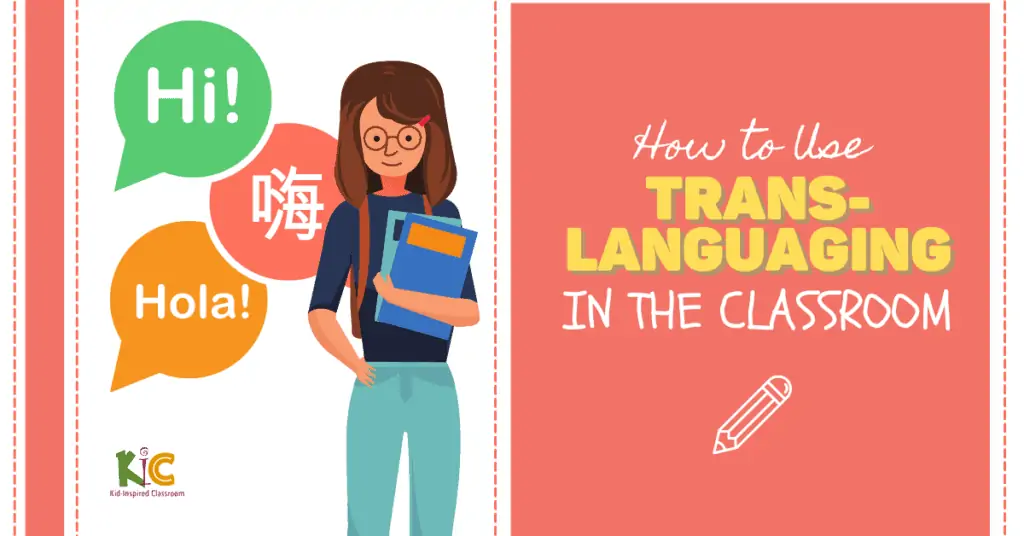
If…
…you have English learners in your classes who speak the same first language…
…then…
…you have translanguaging happening in your classroom, whether you like it or not.
If, like me, every time you see the word translanguaging, your mind starts imagining Hermione casting a spell in one of the Harry Potter books, then this article is for you.
Ever wondered:
- What translanguaging was
- Whether it’s good or bad…or some sort of dark magic (sorry, still on the Harry Potter theme)
- Or how it can be used in the classroom to help our emergent bilingual students
I’ll be covering these questions and more below.
Let’s dive right in.
Translanguaging Definition
In case you are confused, as I was, translanguaging, turns out, is not a particularly difficult concept. It is only a theory that, when faced with an academic task, people who know more than one language use all of their language resources in whatever way best gets the job done.
Basically, the languages in their heads like to play together, and they’re better off for it.
This is translanguaging.
Here are some examples of translanguaging in the classroom that are likely already happening naturally:
- When students mash up two or more different languages to communicate their ideas with each other during a discussion, they are translanguaging.
- When students whisper something in Spanish in order to get confirmation about a question while completing an assignment, they are translanguaging.
- When a student can’t think of a word in English and substitutes the Chinese equivalent instead and a partner comes up with the word in English the first student was looking for, they are translanguaging.
When we only know a single language, or when we first begin learning a second, it’s easy to think of languages in a compartmentalized way. English is English. Spanish is Spanish. Chinese is Chinese.
We sometimes treat them like they are radio buttons: if one is on, the others are not.
Translanguaging posits that multilinguals do not use languages like that.
Like most anything involving humans, it shouldn’t be surprising that we don’t operate like radio buttons.
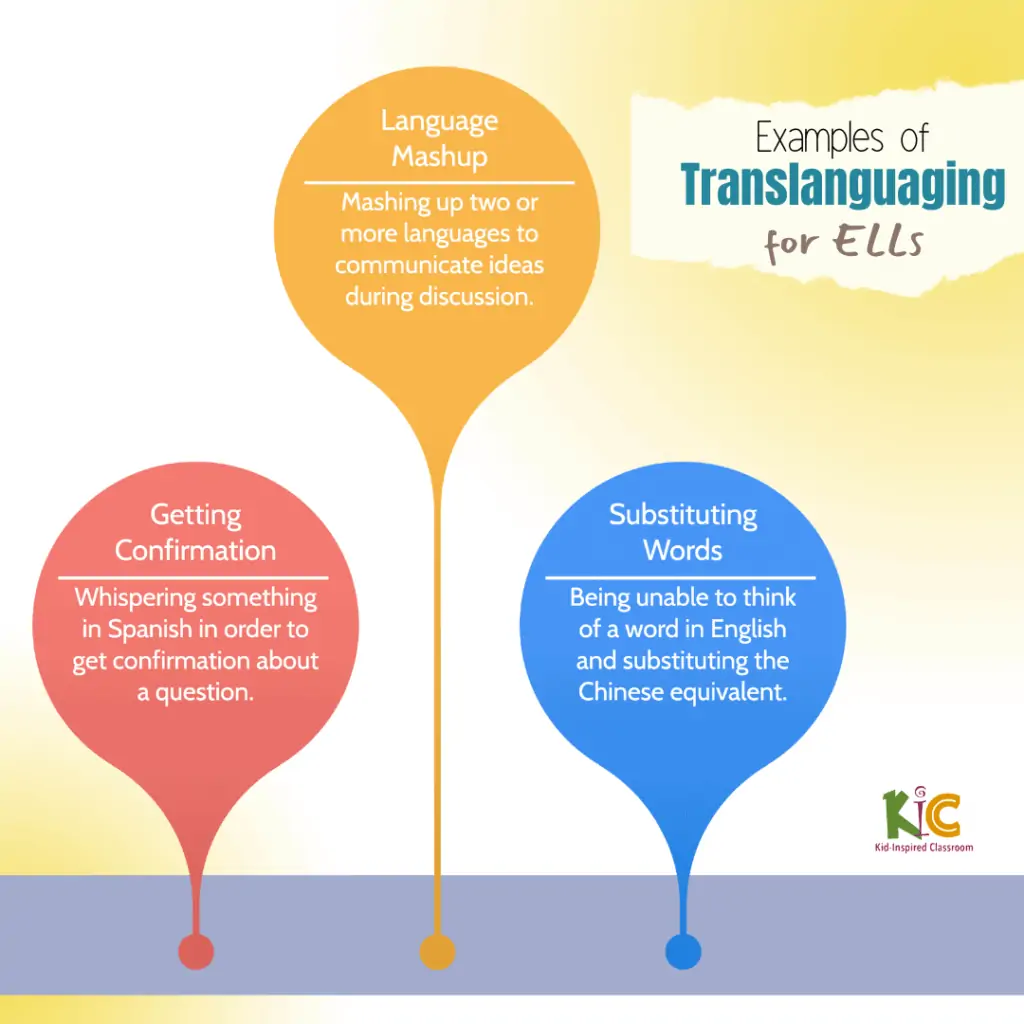
My Personal Experiences with Translanguaging
When I first began learning Chinese, I definitely treated it as this separate silo, completely separated from English.
Now, after marrying a Taiwanese girl and raising a son who goes to school in a Chinese-speaking environment, we translanguage the stuffing out of our languages.
I’ve often wondered whether we’re butchering both languages in the process, but I’ve come to realize that it’s the siloing of our languages that is unnatural, not the other way around.
Now, if you’re a language purist, before you start hitting the computer screen with your shoe, hear me out.
I also don’t believe it’s fine to just mash up our languages in whatever way best gets the job done.
Languages are important.
Being able to communicate both effectively and affectively with them is important.
Our students need to understand that languages are used in different ways in different contexts.
Benefits of Translanguaging
There is no doubting that our English Learners respond far better when they feel that their home language is valued and respected in the classroom.
More than that, their native language can help them increase the speed at which they aquire English.
Also, being bilingual will only continue to benefit them in the future.
Our goal is not simply that they would learn English, but that they would be bilingual, or trilingual, whatever the case may be.
Issues to Be Cautious About with Translanguaging
Though there are many benefits, that doesn’t mean there aren’t things to be cautious about with translanguaging in the classroom.
For translanguaging to work, both languages need to be used. If students are only interacting in their native language and not using English at all, not only are they not translanguaging, they are not going to be able to access grade-level content.
We want to allow space for our students to work with their languages in various and creative ways, ways that help them better improve in both languages.
Strategies for Incorporating Translanguaging in Your Classroom
As mentioned above…
…if you have English learners who speak the same first language, then you have translanguaging happening in your classroom whether you like it or not.
Strategies to incorporate translanguaging can sometimes feel more like directing the flow of a current rather than introducing something new.
Yet, even if you have students who come from different first-language backgrounds, you can still incorporate translanguaging to help them all feel more affirmed and acquire English more quickly.
It is helpful to point out that…
…even though translanguaging involves a lot of translation, it does not mean simply translating everything.
If you translate every word, text, worksheet, assessment…
- Students are notgoing to pay attention to the majority of that translation work.
- Translating everything muddies the water, so to speak, of the content you’re learning, making it more difficult to focus on making meaning from a text.
- Students can become too reliant on their first language effectively mitigating the gains they may otherwise have made with the language they’re trying to acquire.
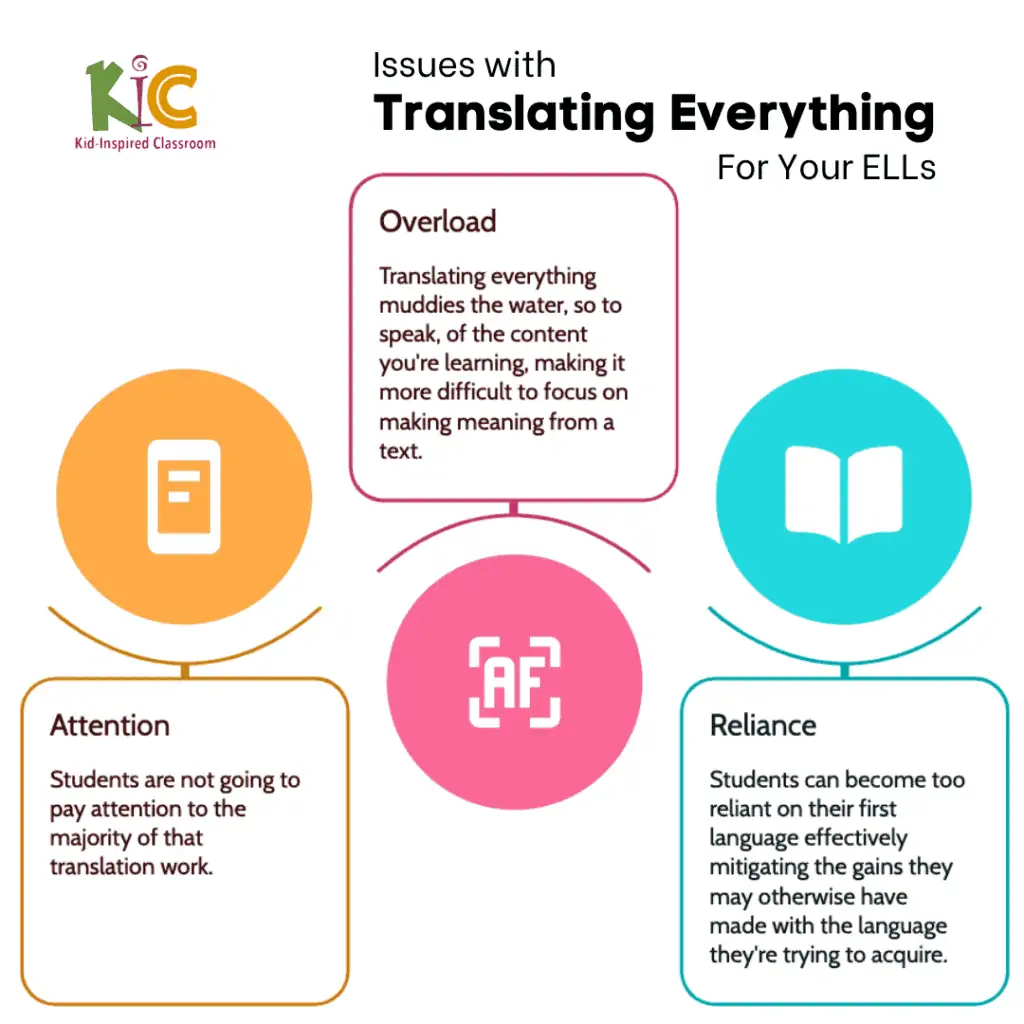
Learning a language is hard.
We need to let it be hard.
And we also need to let our students bring to bear whatever linguistic resources they have at their disposal to help them navigate their new language, so long as they are actually navigating their new language and not just reverting back to their first language.
We need to let our students bring to bear whatever linguistic resources they have at their disposal to help them navigate their new language, so long as they are actually navigating their new language and not just reverting back to their first language.
Translanguaging Strategy 1: Adjusting the Words We Use in Class
As you likely already know, our students are very sensitive to the words we use.
The way we speak about our students’ other languages though is incredibly important. We really need to avoid making comments like:
- “No Spanish in class.”
- “You can’t speak Chinese in here.”
- “You’re not allowed to use Arabic.”
Instead, take every opportunity to affirm students’ other languages while explaining why it’s important to practice English:
- “Your Spanish is really good. Let’s practice your English right now so that it’s as good as your Spanish.”
- “I’m impressed that guys are translating English and Chinese. Just be sure to practice the English you didn’t know a few more times so that you don’t forget.”
- “Can you teach me what you just said in Arabic? Now how do you say that in English? Cool! Nice work!”
Related to this…
…it’s also helpful to speak about knowing more than one language as an asset. That is why English learners are often referred to as emergent bilingual students.
Emergent bilingual students are not simply catching up with their peers. When our English learners catch up to grade level, they have achieved something many of their peers have not.
They have achieved the difficult and valuable goal of becoming bilingual, trilingual, or multi-lingual.
Translanguaging Strategy 2: Home-Language Small Groups
Students are drawn to those who speak the same home language as they do anyways.
When possible, we can direct that energy into their studies by placing them in groups with other students who speak the same home language.
Students can use their first language to help each other make meaning from the English content being learned in class.
- Students can diagram pictures in both languages.
- Students can annotate a text in their home language.
- After introducing a concept, you can have students turn and discuss the concept in their home languages to make sure they have understood the concept correctly.
Translanguaging Strategy 3: Home-Language Journal
Students can create journal pages about whatever concepts they are learning in class. Their journals can utilize both their first language and English to whatever degree they want.
- They can draw and illustrate pictures.
- They can define words.
- They can summarize concepts.
References:
If you’d like to read more about translanguaging theory and pedagogy, the articles below may be helpful.
I’d love to hear what you think. Leave me a comment.


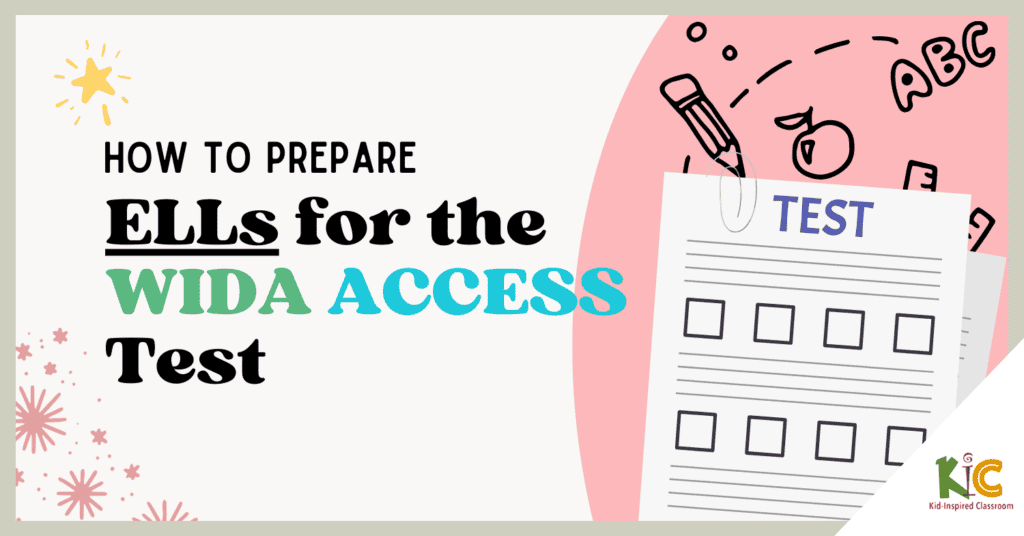
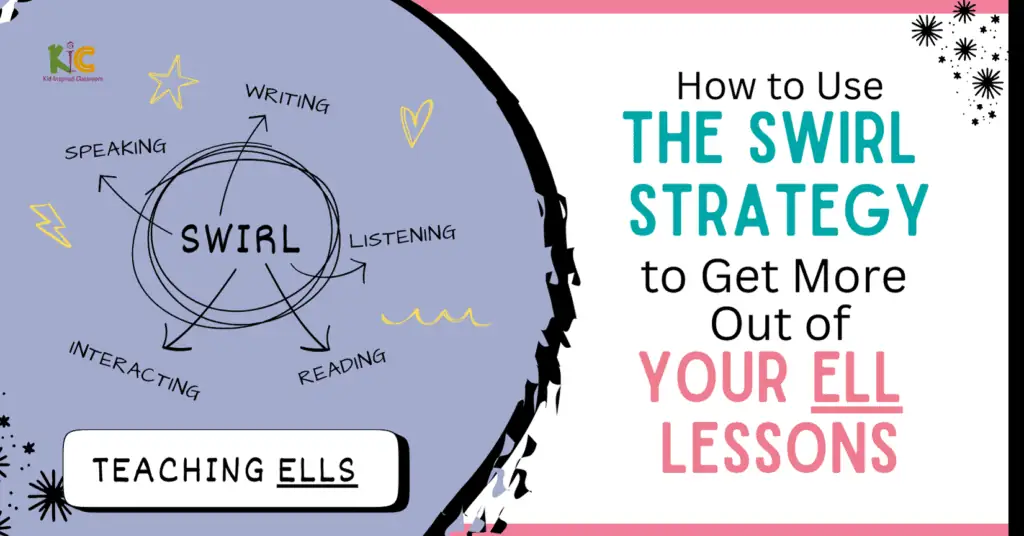
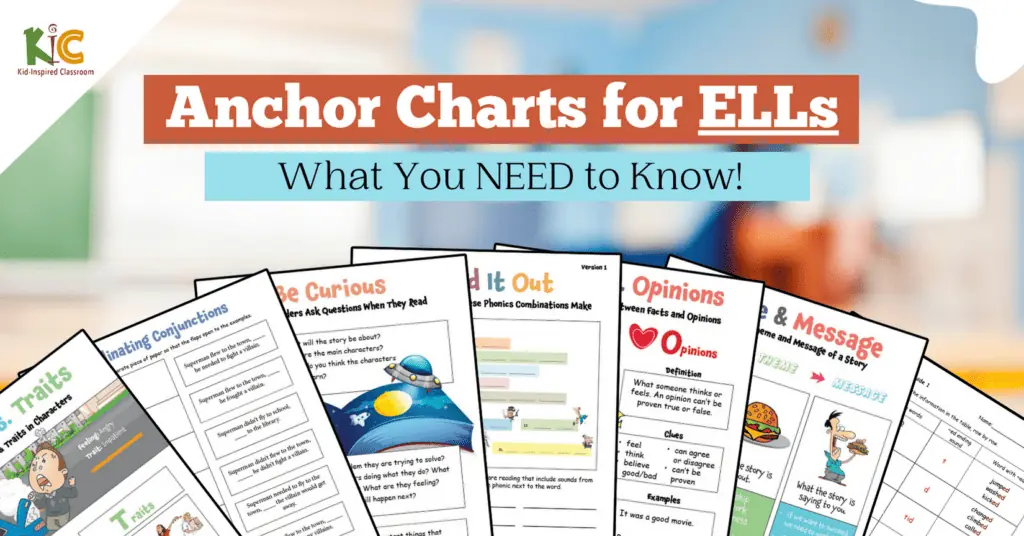
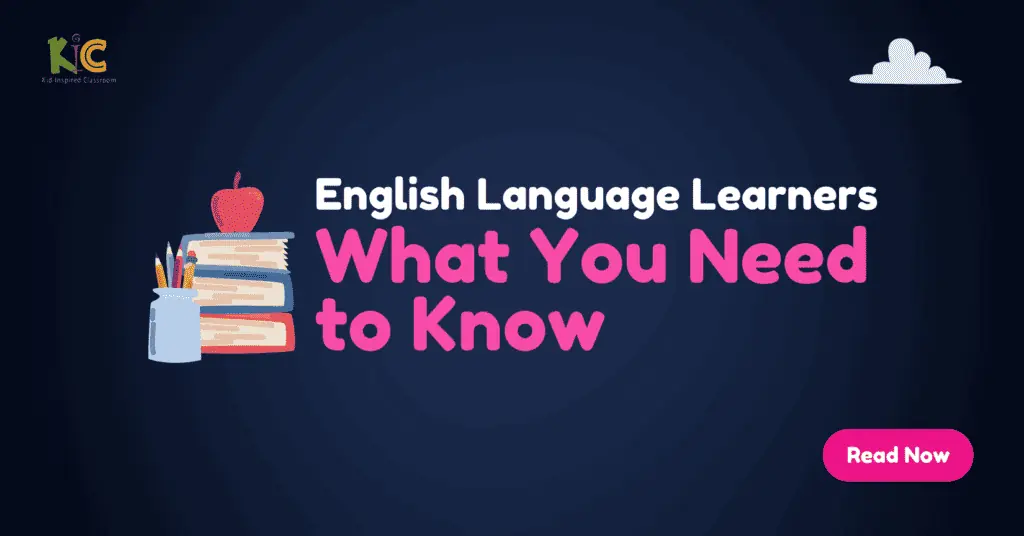

thank you for this explanation – I’ve never heard this term before stumbling upon it on a Facebook group tonight… then found your article with a quick google search. I like the way you suggest balancing the validation of students’ L1 with the goal of teaching them English to help them become multilingual.
Thanks for the note, Stephanie! I was also confused about the term which is why I ended up researching and writing the article. I owe a debt to lots of other teachers in our community who helped me better understand what it meant 🙂
It is indeed very useful. I felt so good helping a Ukrainian year 7 student at the school I work as EAL teacher. We pronounced some of the words in Ukrainian and then focused on English answers.
Sometimes I feel it’s very difficult to approach some of the students. While we’ve got the ones opened and willing to accept your help, we also have those who are so closed that ignore your presence in class and talk only to their same language groups.
Thanks for the not Lucas! Every child is definitely unique and different strategies usually need to be used to get through to different kids, and sometimes time is the only thing that will make a difference. All my best to you and your students!
Fab explanation. I love your humourous style!
Thanks for the note and the kind words, Leena! I’m really glad you liked the article 🙂